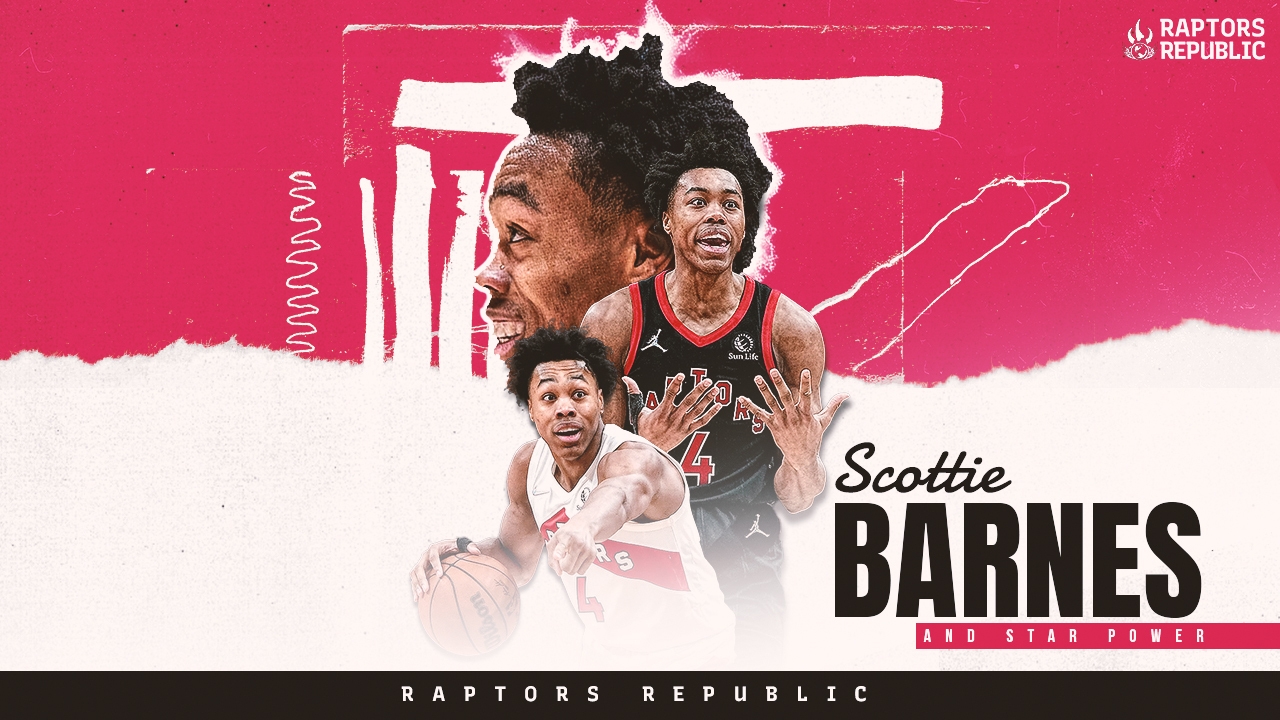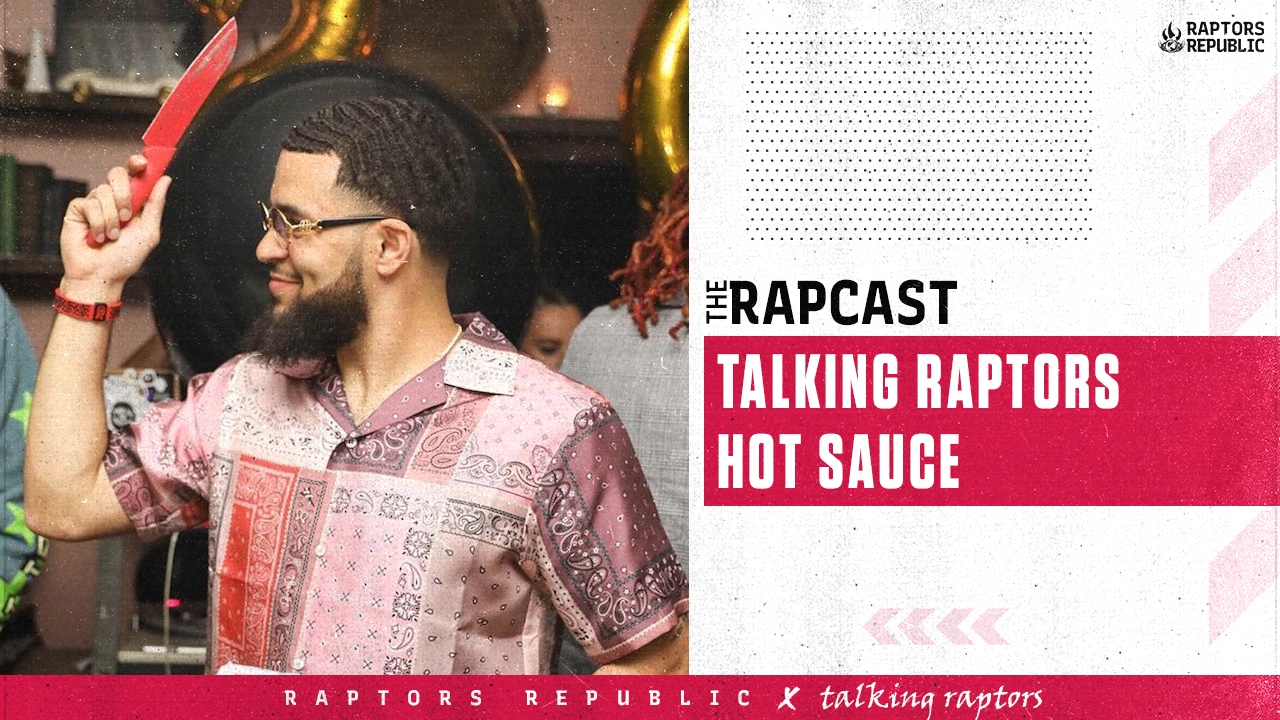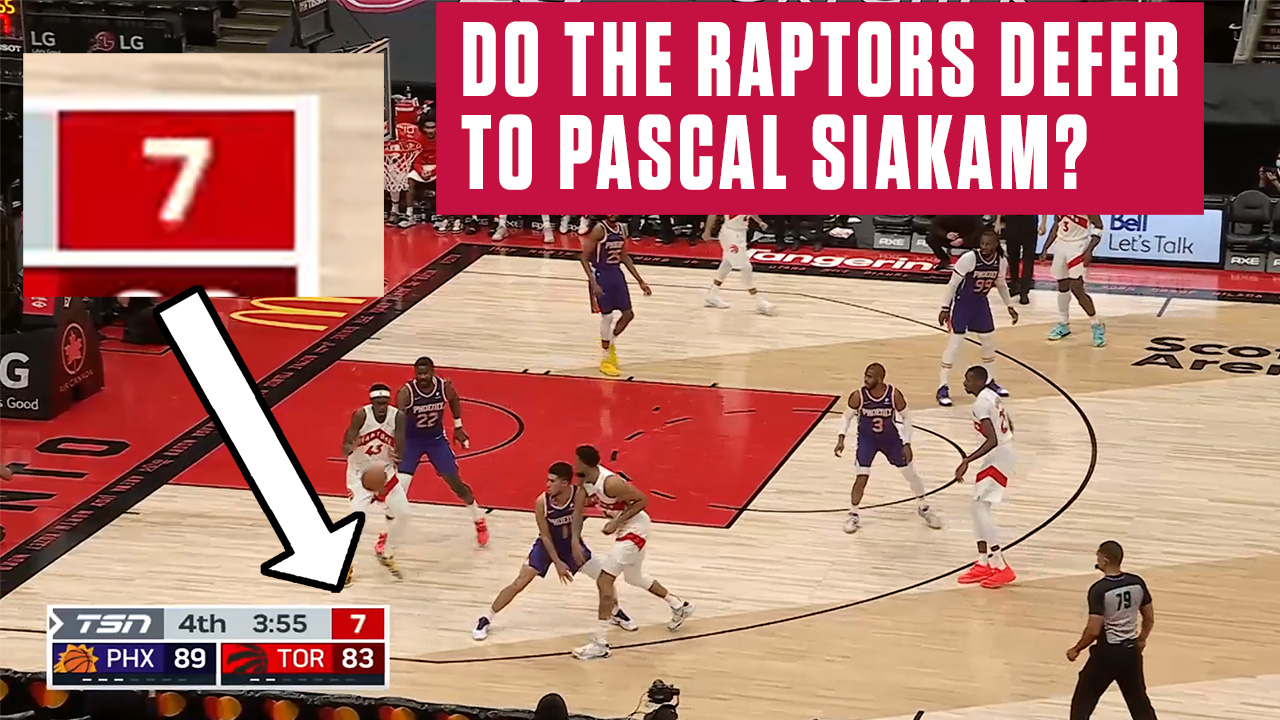Stardom is never guaranteed, but Scottie Barnes has his eyes fixed on it.
Let’s cut to the chase. This isn’t a metaphorical exploration of Fred VanVleet’s prescient ability. No beautiful prose. I watched and charted every single shot, assist, and turnover from Barnes this season (nearly 600 possessions) in an attempt to identify if he was meeting some of the hallmarks of stardom and to highlight the unique ways in which he succeeds. The short version? Barnes is well on his way to becoming a completely novel superstar.
Scoring
Quick Maths: 14.7 PPG – 48/32/71 – 54TS% – 57 Unassisted% – OFF EPM +0.5 (73rd percentile)
Save for the historic defenders, you can’t become a superstar without putting the ball in the bucket regularly. You also have to be responsible for creating your own looks – completely self determining. Barnes’ defensive ceiling is immense, it’s actually what he was drafted on. However, he’s burst onto the scene as a plus scorer and done it in ways no one expected.
Let me explain the meanings, and don’t be intimidated, this is just me being thorough. There will be corresponding film and explanations below.
Advantage Given: A shot attempt that came against a defense in rotation (one he didn’t create), a very impactful screen, and most assisted buckets (there are a few exceptions). Reliance on others to create scoring opportunities to some degree.
Burden of Creation: He’s beating his primary defender, and maybe others with a live dribble. If a player can do this with regularity it makes them infinitely more adaptable and valuable. Also included, offensive rebounding that leads to his own shot. With how consistent he is on the glass, and the Raptors playstyle dictating that he crash for ORBS, this seems like something you can bet will happen most games. If you don’t like that, just subtract the ORBS numbers.
Transition: All of his transition attempts. It’s a completely different style than anything in the halfcourt.
Post-ups are only charted as such if they come after a post-entry pass. Barnes’ isolations are such a weird mix of drive and post-up that it made no sense to mark it that way.
All other types listed are derivatives of Advantage Given or Burden of Creation.
Let’s start with the burden of creation. I find that Barnes is, while not elite, incredibly impressive in this area of the game. His nose for the bucket, length, strength, and borderline love for contact make him a hellacious player to try and lock down in isolation. His skillset as a handler, and dynamic pull-up shooter lag way behind his contemporaries as far as isolation scoring goes. Which means he’s succeeding, overwhelmingly, as an isolation scorer despite these limitations. It’s because no one attacks the way that Barnes does.
Defenders are beside themselves with how to keep up with Barnes. He’s hop-stepping around the paint like the most muscular frog you’ve seen in your life. Constantly flipping his hips, changing direction, but always maintaining his downhill momentum. When he’s in single coverage and has room to work, he’s the league’s most uniquely dynamic driver. He won’t look at you, he’ll turn his back to you and dance around wherever he pleases. Then, when he’s good and ready to put the shot up, he affords very few defenders the benefit of fading away.
Barnes is springing for the bucket, whether you’re there or not. And it leads to these immense, overpowering finishes against titans of the paint for AND-1’s. If you’re diminutive, he pursues the air space above you. That right hand elevates, he transforms into a smiling, athletic statue of liberty, and the touch is immaculate. Given how difficult these shots are, his 64-percent mark at the rim is a great return.
As his handle and jumper improve, as he gets stronger, the fashion in which he isolates seems very likely to improve measurably. He’s already in the 60th-percentile on meaningful volume. Teams will give it more attention and throw more bodies, but given Barnes’ ability to pass out of pressure he should navigate that better than most (more on that later), and it seems like there’s a realistic shot that Barnes becomes one of the best heavy-volume isolation players in the NBA at some point in his career. Whether he can get you a bucket at the end of a game? I’m not sure yet, but this is a player who’s going to get to the bucket and the free throw line his whole career, and without help.
His particular style of driving/floating to the bucket is also why I think the offensive rebounding is a repeatable type of creation. He attacks the rim with such force that he displaces other would be rebounders, and he fiends after his own misses like a mad man. He’s getting 3 offensive rebounds a game, it’s consistent.
So, what does Barnes do if he can’t get all the way to the rim? If help comes from the rim, he’s passing guys into layups. If he just gets stonewalled by a lengthy defender, he’s resetting or trying his hand at a fader – and given the fact that he’s shooting 46-percent (3-10 feet), 42-percent (10-16 feet), and 52-percent (16 feet to 3PT) that’s pretty damn good.
Not only does he counter long defenders with his pull-ups, but his comfortability from mid-range means the Raptors get to try him out as a zone buster. And once again, when you consider his passing, the returns could be huge for that.
Whether it’s right at the bucket or in the mid-range, Barnes is a fantastical and malleable finisher. He’s pirouetting in air on some of these and still finding his center. He’s on balance in the most absurd scenarios, and that’s why defenders are so surprised and flat-footed when he rises up.
It’s also worth pointing out that, that special type of mobility and balance is why Barnes has struggled immensely with the more rote and restrictive post-ups (6-22). You also can’t get away from the fact that Barnes is shooting 40-percent on pull-up threes. I’m not a shot doctor, though. And the volume is really low, so this seems like something to sit and wait on.
As far as burden of creation, Barnes is passing with flying colors. Not only is he good this season, but there’s a very reasonable expectation that he can get much better into the future.
Now, let’s talk about when he’s given advantage. We’re talking about spotting up, cutting, setting screens, and some handoffs and closeouts.
Let’s get the handoffs and closeouts out of the way quickly. Handoffs are good for Barnes the same way they are for Pascal Siakam – you’re giving a great athlete with a somewhat limited dribble a runway, it’s good. More of that, please. As for closeouts? Attacking closeouts is all about punching gaps and hitting windows. Barnes is so much better when he gets to meander into his shooting opportunities and find his spot or rhythm. So, he’s actually pretty limited scoring this way, but I have no qualms with his playmaking, he processes passing reads rapidly no matter what play or spot on the floor.
The spotting up is a real work in progress. The zone busting I alluded to earlier is good. As are his occasional flashes toward ball handlers on the wing – he can hit the spot-up 18-footer. The 3-point shot is up in the air right now, though. 30-percent on catch and shoot threes is a number that has to get better over the course of his career and sometimes he has really bad misses. It’s not a consistent aspect of his game. The best thing you can say is that he doesn’t hesitate on them, and that is really meaningful. After Nick Nurse told the media he wanted him shooting more of them, he started doing it. He’ll never psyche himself into a travel like Patrick Patterson – he’ll let it fly. I also wrote more about it here, if you’d like to read more.
Cutting and setting screens seem like relatives to me. They both reward players who move within the offense for the benefit of their teammates and spacing, and they both reward players who have a great sense for open space and soft spots. Barnes has always been considered a really high ‘feel‘ player, and really unselfish so it’s no wonder that he’s succeeded a lot as a cutter and is coming along as a screen setter who slides into space.
You can see Barnes chopping his feet to maintain passing lanes or pockets of space while also maintaining explosion. He stretches out those long arms and makes himself widely available for anyone looking to make a pass. And as we discussed before, he’s a terrific finisher. His cuts aren’t only of the dunker spot variety. This is a player who reads weak spots from every corner of the court and will insert himself in them.
It’s hard to be a really good off-ball player without a potent catch and shoot jumper, but Barnes is doing so well in a litany of areas that he’s coming close. If that jumper comes around, watch out.
Okay, let’s talk about transition quick.
Long loping steps, a thunderous finisher, incredible court vision, the ability to pass a frozen rope from either hand with a live dribble and do it while directing opposing defenders out of lanes he wants unoccupied. Barnes is already an overwhelmingly dominant transition presence, and he’s going to get better. You’ll see his highlights for years. This is the simplest part of his game and it pops off the screen for a reason.
Playmaking
Barnes’ standout offensive attribute during the draft process. His reputation as a passer preceded him to the point that in his very first NBA games his opponents were getting dusted on drives because they were playing the passing lanes instead of the driving ones. VanVleet is the Raptors most effective pick n’ roll passer right now. Siakam can bend a defense and pick players out better than anyone else on the roster right now. Both of those things will only be true for so long. Barnes is creative, endlessly talented, and oh boy is he dangerous.
I watched all of Barnes 112 assists and separated them into two groups:
Simple read assists, which is something like a swing pass or a handoff to an open player who hits a jumpshot. Or, passes that mediocre playmakers would make. 57 of his assists were of this variety.
Dribble creation/complex assists, which are passes he makes after breaking down the defense himself, or after he’s made a particularly complex read or piercing pass. 55 of his assists were of this variety.
I haven’t charted anyone else’s assists in this way, but I’m certain very few players would meet this ratio on this volume. Barnes has an obsession with gifting his teammates with layups. Teams load up on Siakam and VanVleet in a way that they make a lot of passes to 3-point shooters. I like 3-point shooters, that’s a good thing, but having a guy like Barnes who sees plays that no one else on the roster does? I like that a lot. Barnes’ vision, precision, and audaciousness turns boring set plays into riveting television. If Siakam is catching a back screen or even making a face cut, Barnes is the lone playmaker who can convert those tight windows into layups. LAYUPS people! Free points!
Look at these passes! Over the top to the bigs, laydowns to the dunker spot, using steps off the roll, hitting touchdown passes on back cuts, and the no look cross-court feed to Siakam after the ORB. Quite frankly, if any other player on the Raptors had the ball in these same positions, a handful of these plays don’t get made. Points off the board. That’s the biggest compliment I can pay Barnes, because he’s on a team with one of the best big passers in the league.
Barnes is a little bit looser with the ball than some would like. So, I tracked how many of his turnovers were high risk and low risk. High risk passes are basically where you can see there’s a layup or a great shot opportunity on the other end of it. Low risk would be like if you left your feet and had to bail out with no upside for a good shot. Here’s 2 examples of each:
On that first one you can basically see Barnes begging Achiuwa to make the cut, and so he throws it anyway to force his hand. It was the right play. The bail out that sent Caruso up the court? Not so much.
Barnes had 42 low reward turnovers and 20 high reward turnovers. That’s also a great ratio. You’d much rather someone who turns the ball over while taking a chance on an incredible look for a teammate, rather than someone who gets themselves in trouble repeatedly. A third of Barnes’ turnovers are of the high risk/reward variety and if he were blessed with teammates with better hands a chunk of those might be assists instead.
Barnes’ 3.5 assists per game, the 7.5 potential assists per game, and the quality of looks he’s pushing his teammates into – he’s a remarkable playmaker, and he’s going to get better. It’s still the best part of his game, because there’s no telling what a 28-year old Scottie Barnes is going to be doing to defenses as a passer. It could be truly absurd.
I’m not talking about defense in this one, sorry.
Final thoughts
Barnes doesn’t create at the level that his All-Star teammates do, and as such the team hasn’t overhauled the team towards him in the halfcourt – their overall playstyle is extremely friendly to him to begin with. As teams get a little bit more film on him, the isolation potency could dip this year, but he’s already started to provide value in other playtypes and that means he’ll always be helpful on the floor, as a rookie.
More than anything, it seems like the Raptors are providing the context and playstyle for him to carve out a path towards a diverse type of stardom – which is exactly what his skillset calls for – but they’re also allowing for him to punch up at incredible upside as an isolation scorer.
He will be a star, though. That much seems clear.
Have a blessed day.



